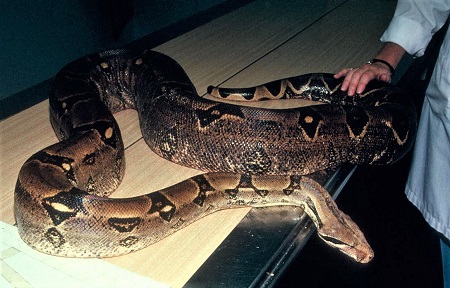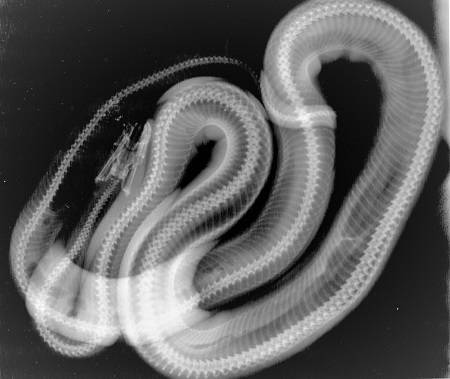Ian Hammond, MD, FACR
A Memorable Patient (the Not-So-Full Monty Python)
In the spring of 1989, I received an unexpected phone call at my hospital office from the curator of the reptile collection at a local university. He wondered if I might be able to arrange an ultrasound scan on a reticulated python to determine if the animal were pregnant. After duly admitting to my ignorance of veterinary imaging, I was intrigued by the challenge and suggested we meet late one afternoon at our downtown medical imaging clinic (after all, the hospital might not be so keen on the project!).
Fortunately, our clinic staff shared my enthusiasm and greeted our guest warmly upon his arrival by bicycle with his charge coiled quietly out of sight in a burlap sack in the front basket. Once inside, he laid the creature gently on an X-ray table and I began the scan, guiding it to the likely location of the conceptuses.
After interminable technical adjustments, probe changes and other fiddling, we failed to achieve any recognizable images and were about to abort the project, when the curator wondered if we might obtain a radiograph. By this time our subject was becoming mildly agitated, seeking ways of slithering off the table (see figure 1).
Once returned to its sack, the snake became quite docile, enabling us to obtain an aesthetically pleasing skeletal X-ray (see figure 2). My colleague was delighted, and two weeks later returned for a radiograph of a boa constrictor. This time we were rewarded with two spinal X-rays — the snake’s and that of the rat that it had recently ingested!
Thanks to the internet, I have since learned that pythons are oviparous reptiles, which helped me conclude, presumably, that our failure to visualize any eggs ruled out pregnancy.
 |
 |
|
| Figure 1. Reticulated python on radiographic table. | Figure 2. Radiograph of the python. |